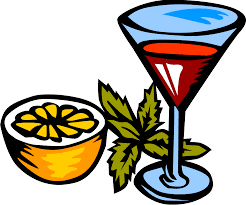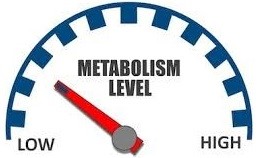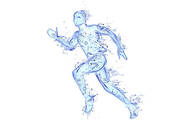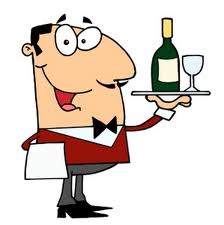Alcohol is one of those controversial topics that I often get asked about from a sports dietetic point of view. In short, my opinion is that alcohol is certainly a favorite mood-altering nutrient and it therefore has both pleasant and unpleasant effects. Many athletes use a nice cold brew as both a relaxant before a big event, or a celebratory tradition after. So my opinion is “moderation y’all, moderation”. What I think most are really seeking, is the science behind how appropriate my opinion really is. My intention in this article therefore, is to weigh up both the healthy and unhealthy aspects and then let you decide whether it is an appropriate mood altering choice for your athletic performance.
Although many researchers have proven that there may be benefits in a drink a day, for those on a fat loss mission, alcohol is probably one of your worst enemies. Having studied the science myself, I can certainly accept that a glass a day can reduce high blood pressure and therefore also reduce the risk of heart disease. Furthermore, the antioxidant content in red wine for example, could not only combat oxidative stress from athletic training, but could also contribute to a stronger immune system. It is human nature to focus on these aspects when finding a framework for debating alcohol’s positives, however keep in mind the following when prioritizing your goals:
Alcohol and weight loss:
Alcohol does have calories – in fact it has more calories per gram than both carbs and protein, and it also metabolizes similarly to fat, allowing for storage rather than a fuel source. These calories are therefore referred to as “empty”. This is besides the high calorie, pure sugar drink mixes that more than often offer a platform for alcohol to presented in. So if you are exceeding the moderation recommendation above, you are probably sabotaging any fat loss plans, moreover, not using optimal fuel while alcohol is present in your system.
To clarify this more scientifically, your body typically gets energy from calories found in macronutrients (like carbohydrates and fats) that digest in the gastrointestinal organs. When alcohol is consumed however, it gets first dibs on the liver, meaning detoxification becomes a priority and digestion takes a seat in the waiting room. The alcohol molecules diffuse through the stomach wall as soon as they arrive and with its speed racer absorption rate, they find the brain and liver in no time. The liver prioritizes detoxification over digestion, placing all of its attention on the alcohol. Carbohydrates and dietary fats which would normally be required for energy now have an opportunity to be converted into body fat, and carried away for enduring fat storage.
This reaction can be somewhat slowed when food is also present in the system. This is also the reason why the mood altering can take longer when drinking with a meal rather than straight up. However, even if the content passing through the gastrointestinal tract is a mixture of food and alcohol, the alcohol grabs first place in the absorption race, arriving at the liver first, demanding the detoxification to subdue the digestion.
Not to mention that alcohol tends to lower ones inhibitions and will power, which can be detrimental to discretionary food choices. Alcohol actually stimulates your appetite. While you might be full from a comparable amount of calories from food, several drinks would not fill you in to the same extent. In this state, one is more likely to overeat, especially foods that seem to have an absorbent reputation, such as greasy fried food.
Many foods that accompany drinking (peanuts, pretzels, chips) are salty, which enhances thirst, encouraging even more drinking. To avoid overdrinking, for every serving of alcohol, you also get one full glass of water in between.
Many athletes prepare for the extra calories of a drink or two prior to a race, by saving calories to enable this. Skipping meals is a bad idea, it will cause a delay in energy absorption, particularly while preparing for an endurance event. Drinking on an empty will only enhance the negative effects of alcohol. Furthermore, allowing oneself to be hungry, may result in grazing on extra calories. If you tend to save calories for some looming drinks, include some extra calorie burn in your taper, instead of missing meals.
Alcohol causes dehydration:
For those swearing by the relaxant benefit of a drink the night before a race, never forget that alcohol is also a diuretic. This means that it causes water loss which ultimately results in dehydration. Water loss results in a loss of important minerals required for performance, particularly the electrolytes such as magnesium, potassium, and calcium. Not only are these minerals vital to the maintenance of fluid balance, but many chemical reactions use them for muscle contraction, relaxation and repair.
Alcohol and sleep:
Okay, so the drinks may actually induce some highly recommended sleep pre-race, I will give you that, but sleep induced by alcohol is often too light. Ultimately, as a result, you may think you are getting some sleep, but you are actually getting less rest.
I have a lot of athletes that seek advice on GI distress. This is a good time to point out that alcohol can also increase the amount of acid that your stomach produces, causing your stomach lining to become inflamed. Besides this extrapolating the chance of distress during athletic performance, over time, excessive alcohol use can lead to serious health problems, including stomach ulcers, liver disease, and heart troubles.
Is one drink better than another?
“So if I am going to have a drink, which are preferable?” is another question I get asked more than often. I like to put this in perspective of what is more important, the calories or the carbs? Most think of straight liquor as low in calories because it has no other nutrients, like carbohydrates in it, whereas drinks like wine, beer or mixers do contain carbs. Remember that it’s the alcohol itself that is calorie dense, yet valueless in nutrients (at least the carbohydrates have some energy fuel burning capacity). Alcohol has 7 calories per gram, carbohydrates have 4. And mixed drinks can have even more empty calories in the mixer, besides the alcohol. So to summarize this point, straight liquor contains approximately 100 calories per shot and that’s without the mixer. If you are calorie conscious, it would be preferable to mix liquor in a diet or club soda, instead of fruit juice, regular soda or sugary premade mixers. The sweeter the drink, the more likely it is to have more sugar, whether its liquor or wine, or mixed drinks. In that respect, dry wines usually have fewer calories than sweet wines. Straight liquor has fewer calories than mixed drinks. Beer and wine have some nutrient benefit in their carbohydrate content. So pick your own poison.
Summary:
Although we can certainly debate that alcohol has some health benefits, we can also see that those with body composition goals or performance targets (or even both) should focus their debate on their priorities. Defending alcohol for the role it plays for you, is one thing, but always keep in mind the flip side to that defense mechanism. And if you do decide to partake in some indulgent traditions, here is a comparison of some drinks that can aid in goal oriented decisions:
| Drink | Serving Size | Calories |
| Red wine | 5 oz. | 100 |
| White wine | 5 oz. | 100 |
| Champagne | 5 oz. | 130 |
| Light beer | 12 oz. | 105 |
| Regular beer | 12 oz. | 140 |
| Dark beer | 12 oz. | 170 |
| Cosmopolitan | 3 oz. | 165 |
| Martini | 3 oz. | 205 |
| Long Island iced tea | 8 oz. | 400 |
| Gin & Tonic | 8 oz. | 175 |
| Rum & Soda | 8 oz. | 180 |
| Margarita | 8 oz. | 200 |
| Whiskey Sour | 4 oz. | 200 |





